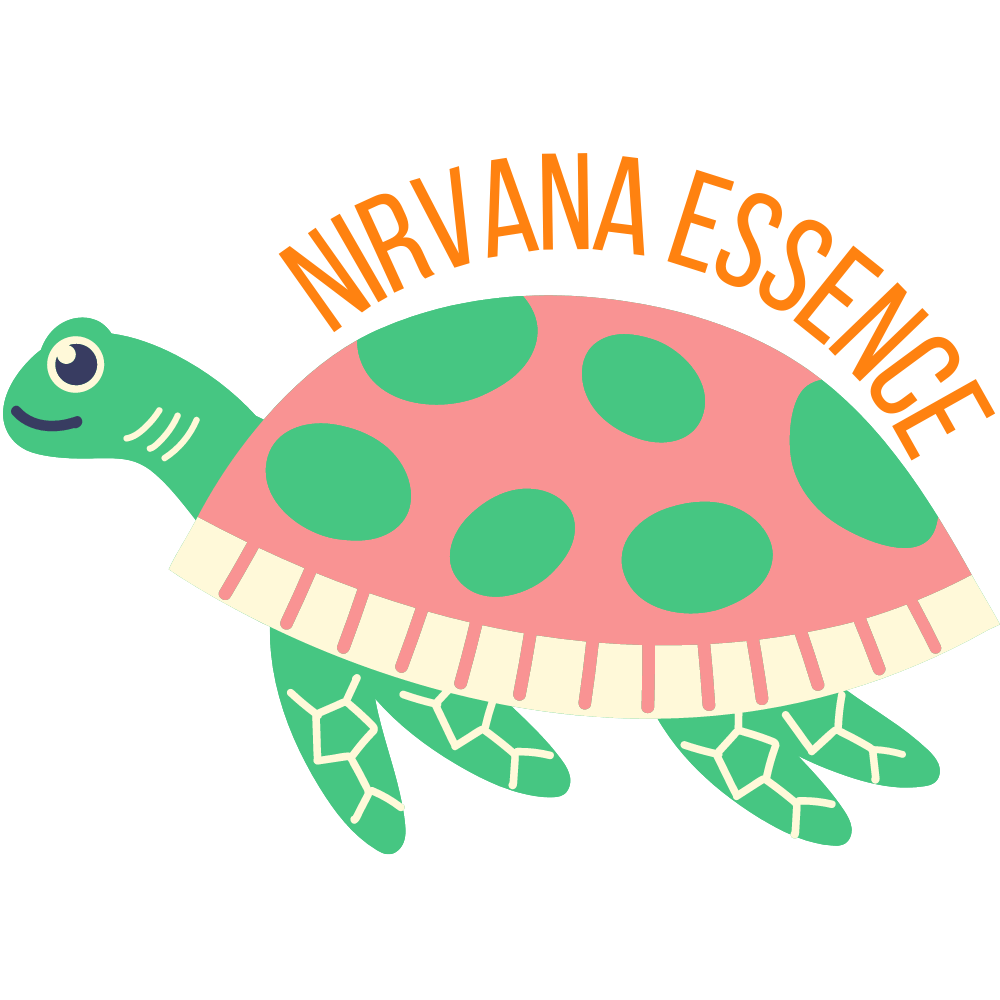Welcome to the world of yoga! If you’re brand new to yoga and don’t know where to start, you’ve come to the right place. This complete guide is specifically designed for beginners and will help you get started on your yoga journey.
Introduction to Yoga for Beginners
Yoga is a practice that combines physical postures, breathing exercises, and meditation. It originated in ancient India and has been practiced for thousands of years. Today, yoga is recognized worldwide for its numerous health benefits and its ability to bring balance to the body and mind.
As a beginner to yoga, you might feel overwhelmed by the many yoga styles and poses. But don’t worry, yoga is for everyone, regardless of your fitness level or flexibility. This guide will introduce you to the basics of yoga, from the different types of yoga to the essential poses you need to know.
Understanding Yoga: A Complete Guide for Beginners
What is Yoga?
Yoga is a holistic practice that focuses on harmonizing the body, mind, and spirit. It’s more than just a physical workout; it’s a way of life that encourages a balanced lifestyle and promotes physical and mental well-being.
There are many aspects of yoga, but for beginners, it’s important to start with the physical yoga postures, also known as asanas. These poses are designed to strengthen and stretch the body, improve balance and flexibility, and help you develop a better body awareness.

Getting Started with Yoga: A Beginner’s Guide
Essential Yoga Equipment for Beginners
To start your yoga practice, you’ll need a good yoga mat. A non-slip yoga mat will provide the necessary grip for your hands and feet, ensuring that you can perform each pose safely and effectively. You might also want to invest in some yoga blocks and a yoga strap, which can help you achieve the correct alignment in certain poses.
Preparing for Your First Yoga Class
Before you attend your first yoga class, it’s important to keep an open mind. Remember, yoga is a personal journey, and everyone’s experience is unique. Don’t compare yourself to others; instead, focus on your own progress and listen to your body’s signals.
When you’re new to yoga, it’s best to start with a beginner’s class. A beginner yoga class will introduce you to the basic yoga postures and help you understand the fundamentals of yoga practice. Your yoga teacher will guide you through each pose and offer modifications to make them more accessible.
Yoga Poses for Beginners: A Comprehensive Guide
10 Yoga Poses Every Beginner Should Know
As a beginner, it’s important to familiarize yourself with some basic yoga poses. Here are 10 yoga poses for beginners that you’ll likely encounter in your first yoga class:
- Mountain Pose (Tadasana)
- Downward-Facing Dog (Adho Mukha Svanasana)
- Warrior I (Virabhadrasana I)
- Warrior II (Virabhadrasana II)
- Tree Pose (Vrksasana)
- Triangle Pose (Trikonasana)
- Child’s Pose (Balasana)
- Cobra Pose (Bhujangasana)
- Cat-Cow Pose (Marjaryasana-Bitilasana)
- Savasana (Corpse Pose)
Each of these poses offers different benefits and challenges, but they’re all suitable for beginners. Remember, it’s not about how the pose looks, but how it feels. Listen to your body and modify the poses as needed.
How to Practice Yoga Poses Safely
Safety should always be your top priority when practicing yoga. Here are some tips to ensure you practice yoga safely:
- Always warm up before starting your yoga session. This will prepare your body for the poses and reduce the risk of injury.
- Don’t push yourself too hard. Yoga is not about forcing your body into a pose, but about finding a balance between effort and ease.
- Use props like yoga blocks and straps to make the poses more accessible.
- Listen to your body. If a pose causes pain or discomfort, back off or try a modified version of the pose.
- Always end your yoga session with a relaxation pose, like Savasana. This will allow your body to absorb the benefits of your practice.
Benefits of Practicing Yoga
The benefits of yoga are manifold. Regular yoga practice can improve your flexibility, build strength, promote better breathing, reduce stress, and enhance your mental focus. Many yoga students also report improved sleep and digestion, increased energy levels, and a greater sense of overall well-being.
Practicing yoga regularly can offer a myriad of benefits, both physically and mentally. Here are some of the key benefits you can expect from a regular yoga practice:
Physical Benefits
- Improved Flexibility: Yoga poses stretch your muscles and increase your range of motion. With regular practice, you can expect to see improvements in your flexibility.
- Increased Strength: Many yoga poses require you to bear your body weight in new ways, including balancing on one leg or supporting yourself with your arms. This helps to build strength.
- Enhanced Balance: Balance poses in yoga can improve your core strength and body control, which can help prevent falls.
- Boosted Endurance: The practice of yoga helps increase endurance levels, particularly in cardio-heavy yoga styles like Vinyasa or Power yoga.
- Weight Management: Yoga can aid in weight management. According to the CDC and ACSM recommendations, practicing yoga can burn approximately 1.2 dietary Calories per pound per hour, aiding in weight loss and management.
Mental Benefits
- Stress Reduction: Yoga is well-known for its ability to relax and de-stress the mind. This is achieved through a combination of physical poses, controlled breathing, and meditation or relaxation.
- Improved Concentration: Regular yoga practice helps improve focus and concentration. This is particularly beneficial in our distraction-prone lives.
- Increased Body Awareness: Yoga requires you to pay attention to your body, posture, and alignment during practice. This can lead to improved body awareness in daily life.
- Enhanced Mood: Yoga can boost your mood and overall sense of well-being. Regular practice often leads to a reduction in anxiety and depression symptoms.

Establishing a Beginner Yoga Routine
How to Create a Yoga Routine at Home
Starting a yoga practice at home can be a great way to incorporate yoga into your daily routine. Here are some tips to help you create a beginner yoga routine:
- Start with a warm-up: Begin with some gentle movements to wake up your body and prepare it for the poses.
- Choose your poses: As a beginner, start with easy yoga poses that you feel comfortable with. As you gain confidence, you can start to include more challenging poses in your routine.
- Take your time: Don’t rush through the poses. Take your time to get into each pose, hold it for a few breaths, and then slowly release it.
- End with relaxation: Conclude your practice with a relaxation pose, like Savasana, to help your body and mind absorb the benefits of your practice.
Incorporating Yoga and Meditation into Your Routine
Yoga and meditation go hand in hand. Incorporating meditation into your yoga routine can help you develop a deeper awareness of your body and breath, and enhance the mental benefits of your practice. You can start with just a few minutes of meditation at the end of your yoga session, gradually increasing the time as you get more comfortable with the practice.
Different Types of Yoga: Finding the Best Style for You
Overview of Different Yoga Styles
When it comes to yoga, there’s no one-size-fits-all. The best yoga is the one that resonates with you and fits your lifestyle. Here’s a brief overview of some popular yoga styles:
- Hatha Yoga: This is a gentler form of yoga that focuses on basic postures and breathing exercises. It’s a great choice for beginners.
- Vinyasa Yoga: This style involves a series of poses that flow smoothly into each other. It’s a bit more challenging, but still accessible for beginners.
- Iyengar Yoga: This style emphasizes precision and alignment in the poses. It often uses props, making it a good choice for beginners and those with physical limitations.
- Yin Yoga: This is a slow-paced style where poses are held for longer periods. Yin yoga targets the connective tissues, including the ligaments, bones, and the joints of the body that normally are not exercised much in a more active style of asana practice.
- Restorative Yoga: This style uses props to support the body in poses, allowing you to completely relax and rest.
- Hot Yoga and Bikram Yoga: These styles are practiced in a heated room, which can help you sweat out toxins. While they can be challenging, they’re also very rejuvenating. Bikram yoga, in particular, is a series of 26 poses and two breathing exercises performed in the same order every class.
How to Choose the Best Yoga Style for You
Choosing the right style of yoga is a personal decision that depends on your physical abilities and goals. If you’re new to yoga, a Hatha or Restorative yoga class might be a good place to start. If you’re looking for a more dynamic practice, you might enjoy Vinyasa or Power Yoga. Remember, the best yoga is the one that you enjoy and can practice regularly.
Here’s a table summarizing the different styles of yoga:
| Yoga Style | Description | Best For |
|---|---|---|
| Hatha Yoga | A gentle form focusing on basic postures and breathing | Beginners |
| Vinyasa Yoga | A dynamic practice linking breath and movement | Those looking for a more physical practice |
| Iyengar Yoga | Focuses on precision and alignment | Beginners and those with physical limitations |
| Yin Yoga | Slow-paced style with poses held for longer periods | Those looking to increase flexibility and relaxation |
| Restorative Yoga | Uses props to fully support the body in poses | Those seeking deep relaxation |
| Hot/Bikram Yoga | Practiced in a heated room to promote sweating | Those looking for a challenging and rejuvenating practice |
Remember, the journey of yoga is one of exploration and personal growth. It’s not about being perfect but about being present. So roll out your yoga mat and get started on your yoga journey today!
Conclusion: Embarking on Your Yoga Journey
Embarking on your yoga journey is a commitment to your overall well-being. It’s not just about the physical benefits, but also the mental and emotional growth that comes with consistent practice. Whether you’re looking to increase your flexibility, build strength, reduce stress, or simply find a moment of peace in your busy day, yoga has something to offer everyone.
Remember, yoga is not about perfection, but about the journey. It’s about showing up on your mat, day after day, and being present in each moment. So whether you’re practicing in a yoga studio or at home, under the guidance of a yoga instructor or following a YouTube tutorial like Yoga with Adriene, the most important thing is to listen to your body and honor where you are in your practice.
As you explore the different styles of yoga, from the gentle flow of Hatha yoga to the intense heat of Bikram yoga, remember that the best yoga is the one that resonates with you. Don’t be afraid to try different classes, instructors, or styles until you find what feels right for you.
And finally, remember that every yogi started where you are now. Every expert was once a beginner. So be patient, keep an open mind, and enjoy the journey. As the famous yoga instructor Pattabhi Jois said, “Practice, and all is coming.”
For more information on the benefits of yoga and how to get started, check out these resources:
- Harvard Health Publishing: The health benefits of yoga
- Yoga Journal: Yoga for Beginners – Everything You Need to Know Before You Start
Namaste.
FAQs
1. Which type of yoga is best for beginners?
Hatha yoga is often recommended as the best type of yoga for beginners. It’s a gentler form of yoga that focuses on basic postures and breathing exercises, making it a great way to get started in yoga. However, the best yoga is the one that resonates with you, so don’t be afraid to explore different styles.
2. How often should I do yoga as a beginner?
As a beginner, it’s recommended to start with two to three yoga sessions per week. This allows your body to get used to the new movements and poses. As you become more comfortable, you can increase the frequency of your practice.
3. How do I start yoga at home for beginners?
Starting yoga at home is a great option for beginners. You can follow online classes or tutorials, such as Yoga with Adriene, which offers a variety of yoga series for beginners. Make sure you have enough space to move around and a good yoga mat.
4. Can I learn yoga at home by myself?
Yes, you can learn yoga at home by yourself. There are many online resources, including video tutorials and apps, that can guide you through the poses and sequences. However, if you’re completely new to yoga, it might be beneficial to attend a few classes first to get a feel for the poses and proper alignment.
5. What is the best first yoga class?
A beginner yoga class or a Hatha yoga class is often a good first yoga class. These classes usually focus on basic poses and slow, controlled movements, making them suitable for beginners.
6. Do you need any equipment for yoga?
The only essential equipment for yoga is a yoga mat. Some people also find it helpful to use props like yoga blocks and straps, especially when first starting out.
7. Can beginners do yoga everyday?
Yes, beginners can do yoga every day. However, it’s important to listen to your body and take rest days as needed. Remember, yoga is about balance and mindfulness, not pushing yourself to the limit.
8. What happens if I do 20 minutes of yoga everyday?
Doing 20 minutes of yoga every day can have numerous benefits, including improved flexibility, increased strength, reduced stress, and better concentration. It’s a great way to start your day or unwind in the evening.





















